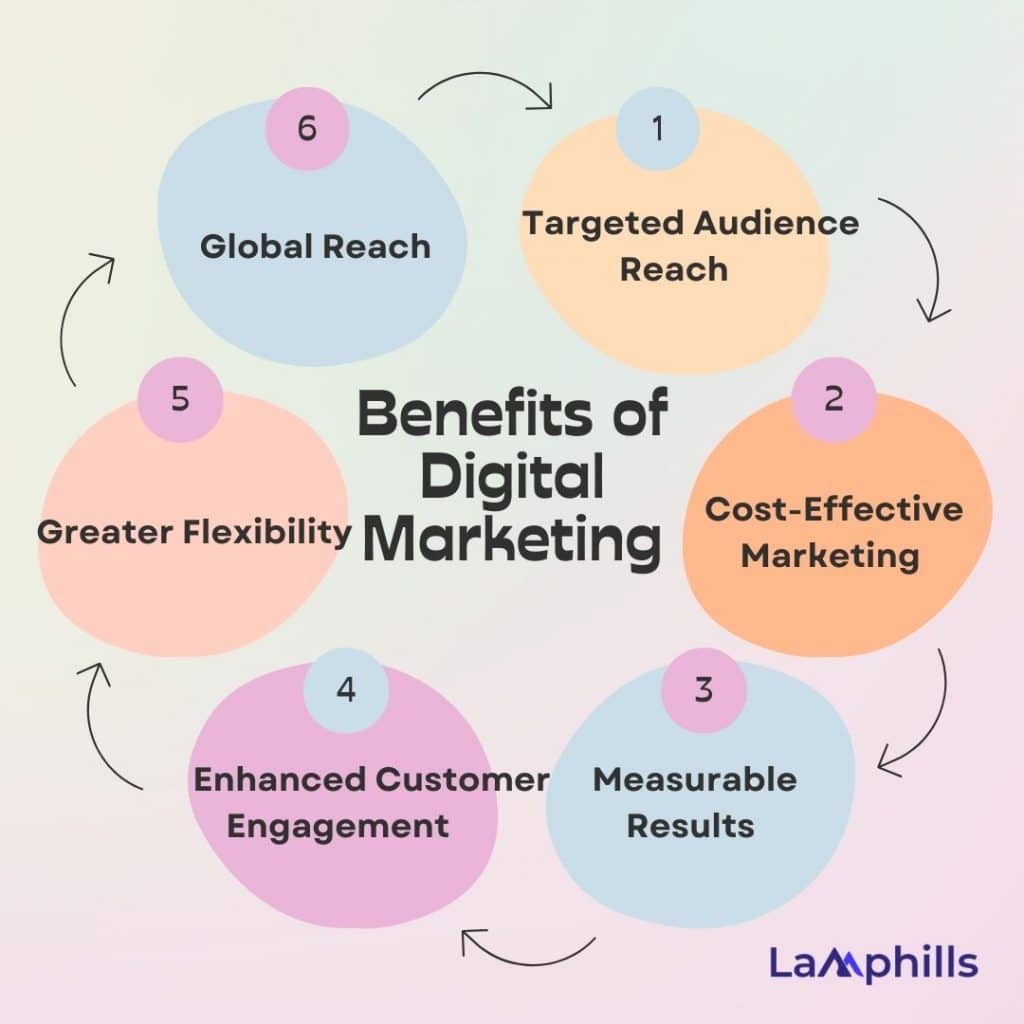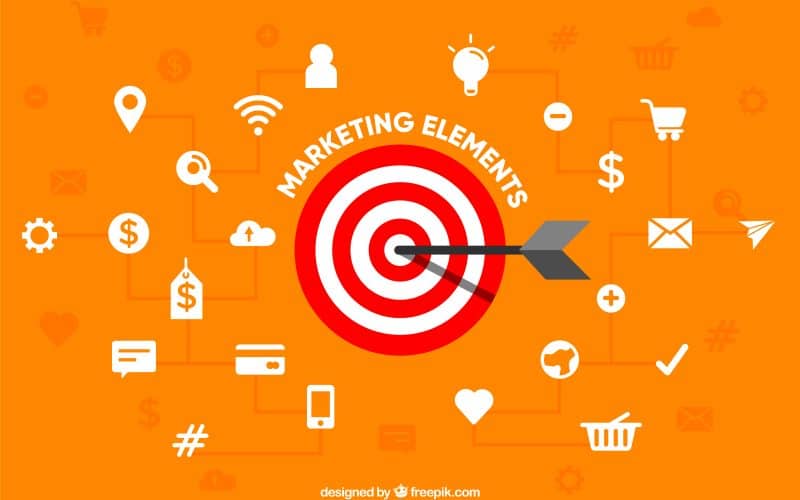What are digital marketing objectives, and why are they important for your brand’s success? Based on my experience, I’ll tell you now that surely, having clear digital marketing objectives is like having a map on a road trip; without them, you’re driving aimlessly. These objectives guide your efforts, ensuring every action moves you closer to your goals.
In this article, I’ll share practical tips on defining and setting digital marketing objectives, complete with examples to elevate clarification. So, stick around, and you’ll learn how to give your digital marketing efforts the direction and purpose they need to succeed.
Key Points
- Digital marketing is the use of the internet and online technologies to promote products or services.
- A digital marketing objective defines what you aim to achieve through your online marketing efforts.
- To improve conversion rates, you can optimize your website’s user experience, streamline the checkout process, and create compelling calls-to-action (CTAs).
- Competitor analysis involves researching competitors’ products, marketing strategies, and customer feedback.
- Social media, email marketing, and content marketing create opportunities for direct customer interaction.
Digital Marketing Objectives
Now, before I tell you about digital marketing objectives, I’ll first remind you what digital marketing is just to get you acquainted with the subject.
What is Digital Marketing?
Digital marketing is the use of the internet and online technologies to promote products or services. It involves various strategies like social media marketing, email marketing, content marketing, and search engine optimization (SEO). For instance, I once worked with a local bakery, and we used Facebook and Instagram to post daily specials and engage with customers. This direct interaction and online presence increased our sales and customer loyalty.
A digital marketing objective defines what you aim to achieve through your online marketing efforts. These objectives guide your strategy and help measure success. The bakery’s objective was to increase online orders by 20% within three months. By focusing on engaging content and targeted ads, we achieved this goal.
Digital marketing and digital marketing objectives work together to drive success. If your digital marketing strategy is the plan, the digital marketing objective is the destination. When both align, like in my bakery’s case, your efforts are more focused and measurable, leading to better results.
Here are the common digital marketing objectives that every writer tends to achieve:
#1. Increase Website Traffic
The goal is to attract more visitors to your website. More traffic means more potential customers. To achieve this, you can use various tactics like Search Engine Optimization (SEO), content marketing, and paid advertising. For instance, focusing on SEO helps your site appear higher in search engine results, making it easier for potential customers to find you. Social media marketing can also drive traffic by sharing engaging content that leads back to your website. When I ran an online store, we saw a significant increase in website traffic by optimizing our blog posts with relevant keywords and sharing those posts on social media platforms.
#2. Generate Leads
Generating leads involves capturing potential customers’ information, such as email addresses or phone numbers. This can be achieved through gated content like e-books, webinars, or newsletters. Effective lead generation strategies include creating valuable content that your audience finds useful and offering it in exchange for their contact information. When we offered a free e-book on our website, our email list grew significantly, providing us with more leads to nurture into customers through targeted email campaigns.
#3. Boost Brand Awareness
Brand awareness means making more people aware of your brand. This can be achieved through content marketing, social media, and online advertising. Creating engaging and shareable content, such as blog posts, videos, and infographics, helps spread the word about your brand. Collaborating with influencers and running targeted ad campaigns can also boost brand visibility. For instance, running a series of informative blog posts on industry trends helped us become a trusted resource in our field, significantly increasing our brand awareness.
#4. Improve Conversion Rates
This objective focuses on turning website visitors into customers. To improve conversion rates, you can optimize your website’s user experience, streamline the checkout process, and create compelling calls-to-action (CTAs). Techniques like A/B testing can help identify which elements of your site are most effective in converting visitors. We implemented A/B testing on our landing pages, experimented with different headlines and CTA buttons, and found that certain combinations led to a higher conversion rate, resulting in more sales.
#5. Increase Social Media Engagement
Engaging with your audience on social media can build a loyal community. This involves interacting with your followers, responding to comments, and creating content that encourages likes, shares, and comments. Hosting live events, running contests, and sharing user-generated content can also boost engagement. When we started responding to comments and messages promptly and running interactive polls and Q&A sessions, our social media engagement saw a noticeable increase, leading to a more active and engaged community.
#6. Enhance Customer Retention and Loyalty
Keeping existing customers is as important as gaining new ones. Customer retention strategies include offering personalized experiences, loyalty programs, and excellent customer service. Regularly communicating with customers through email marketing and providing exclusive offers can also enhance loyalty. We used email marketing to send personalized offers and updates, which helped improve our customer retention rates and build long-term loyalty among our customers. For example, a loyalty program offering discounts on future purchases encouraged repeat business.
#7. Improve Customer Support
Effective customer support can enhance customer satisfaction and loyalty. Implementing tools like chatbots, live chat, and comprehensive FAQs can provide quick and helpful responses to customer inquiries. Monitoring social media channels and responding to customer feedback promptly is also crucial. We used chatbots and social media channels to provide 24/7 support, ensuring that our customers received timely assistance and enhancing their overall experience with our brand.
#8. Conduct Market Research
Understanding your market helps you make informed decisions and tailor your strategies to meet customer needs. Market research involves gathering data about your target audience’s preferences, behaviors, and pain points. Tools like online surveys, social media listening, and customer feedback forms can provide valuable insights.
Furthermore, we used online surveys and social media listening tools to gather insights about our audience’s preferences and behaviors. This information guided our product development and marketing strategies, ensuring we met our customers’ needs effectively.
#9. Competitor Analysis
Knowing what your competitors are doing helps you stay ahead and identify opportunities for improvement. Competitor analysis involves researching competitors’ products, marketing strategies, and customer feedback. This can be done through online research, social media monitoring, and using tools like SEMrush or Ahrefs. We regularly analyzed competitors’ websites and social media activities to identify their strengths and weaknesses. This allowed us to refine our strategies, differentiate our offerings, and capitalize on gaps in the market.
#10. Measure and Analyze Results
Tracking the performance of your campaigns is essential to understand what works and what doesn’t. Using analytics tools like Google Analytics, you can measure key metrics such as website traffic, conversion rates, and social media engagement. Regularly analyzing this data helps you make data-driven decisions and optimize your marketing efforts. We used analytics tools to measure website traffic, conversion rates, and social media engagement. By analyzing this data, we identified high-performing campaigns and areas needing improvement, ensuring our marketing efforts were effective and aligned with our objectives.
Digital Marketing Objectives Example
Understanding digital marketing objectives is important for crafting strategies that deliver results. Here are some key examples to illustrate these objectives and how they can be achieved:
#1. Increase Conversions
- Objective: Enhance the website and various marketing channels to boost conversion rates.
- Example: Conducting A/B tests on different website designs to determine the most effective one.
#2. Generate Leads
- Objective: Gather information about potential customers for future nurturing.
- Example: Providing visitors with a free ebook or whitepaper in exchange for their email addresses.
#3. Enhance Customer Engagement
- Objective: Interact with customers and keep them engaged with the brand.
- Example: Hosting live sessions or Q&A events with followers or organizing contests.
#4. Drive Website Traffic
- Objective: Draw more visitors to the website.
- Example: Developing and executing SEO strategies to improve organic search rankings and running targeted PPC campaigns to increase site traffic.
#5. Improve Customer Retention
- Objective: Maintain customer loyalty and encourage repeat business.
- Example: Sending customized emails to update customers about new deals and offers.
#6. Increase Brand Awareness
- Objective: Boost brand visibility and recognition.
- Example: Launching a social media campaign that promotes user-generated content with branded hashtags.
#7. Boost Sales and Revenue
- Objective: Raise overall sales and income.
- Example: Offering time-limited discounts and promotions to stimulate immediate purchases.
#8. Expand Market Share and Reach
- Objective: Enter new markets and broaden audience reach.
- Example: Creating content and marketing campaigns specifically designed for different regions.
Here is an infographic on the benefits of digital marketing

Benefits of Digital Marketing
Digital marketing has become essential for businesses today. It’s all about reaching your audience where they spend their time—online. Digital marketing offers countless benefits.
#1. Targeted Audience Reach
One of the main benefits of digital marketing is the ability to reach a targeted audience. Unlike traditional methods, digital marketing allows businesses to target specific demographics, interests, and behaviors. This precision ensures that your message reaches those most likely to be interested in your product or service.
#2. Cost-Effective Marketing
Digital marketing is often more cost-effective than traditional marketing. Small businesses, in particular, benefit from this. With a smaller budget, you can reach a large audience. Tools like pay-per-click advertising and social media marketing provide significant returns on investment.
#3. Measurable Results
Another benefit of digital marketing is the ability to measure results accurately. You can track every click, view, and conversion. This data helps businesses understand what works and what doesn’t, allowing for continuous improvement. With digital marketing, you see the direct impact of your efforts.
#4. Enhanced Customer Engagement
Digital marketing also enhances customer engagement. Social media, email marketing, and content marketing create opportunities for direct customer interaction. This builds stronger relationships and increases customer loyalty. Engaged customers are more likely to become repeat buyers.
#5. Greater Flexibility
The flexibility of digital marketing is another key benefit. Campaigns can be adjusted in real time based on performance. This adaptability ensures that marketing efforts remain effective and relevant. Whether changing an ad’s design or targeting a new audience, digital marketing offers unmatched flexibility.
#6. Global Reach
Finally, digital marketing allows for a global reach. The Internet breaks down geographical barriers, enabling businesses to reach customers worldwide. This is particularly beneficial for e-commerce businesses looking to expand their market.
What Are the 5 S’ Objectives of Digital Marketing?
The 5S objectives of digital marketing focus on different key areas to improve overall performance. Here they are:
Sell: Boost sales through online channels. This involves increasing website traffic, improving conversion rates, and enhancing the overall user experience to drive more sales.
Serve: Improve customer service. This includes providing valuable information, addressing customer queries promptly, and ensuring a seamless experience across all touchpoints to keep customers satisfied and loyal.
Speak: Engage with your audience. Use social media, blogs, emails, and other digital platforms to interact with your customers, gather feedback, and build strong relationships.
Save: Reduce costs through digital solutions. This means using digital tools and platforms to streamline processes, automate tasks, and cut down on expenses like printing and postage.
Sizzle: Enhance your brand’s online presence. Create a compelling digital presence with engaging content, attractive visuals, and a strong online reputation to make your brand stand out.
How To Write a Digital Marketing Objective?
Here’s a straightforward approach:
#1. Identify the Goal
The first step in writing a marketing objective is to know what you want to achieve. This could range from increasing brand awareness, generating more leads, boosting sales, or even launching a new product.
The goal needs to be clear and aligned with your business’s overall mission. For example, if your business wants to enter a new market, your marketing goal could be to build brand recognition in that specific market.
#2. Be Specific
Vague objectives don’t give a clear direction. Instead of saying “increase sales,” a specific objective would be “increase online sales by 20% in the next quarter.” Specificity provides a clear target and helps everyone understand exactly what needs to be achieved. It helps in breaking down the goal into actionable steps.
#3. Make It Measurable
A marketing objective should always be measurable. This means you need to define metrics that will indicate success. For instance, if your goal is to increase brand awareness, you might measure this through social media engagement, website traffic, or the number of mentions in the media. Measurable objectives allow you to track progress and adjust strategies as needed.
#4. Set a Time Frame
Time frames give a sense of urgency and help in planning and evaluating progress. For example, setting a goal like “achieve a 15% increase in lead generation over the next six months” provides a clear timeline. This helps in monitoring progress regularly and making necessary adjustments to ensure the goal is met within the specified period.
#5. Ensure It’s Achievable:
Objectives should be realistic and attainable. Setting an overly ambitious goal can lead to frustration and demotivation. Consider your current resources, market conditions, and any potential obstacles. For example, aiming to double your sales in a month might not be achievable if you don’t have the infrastructure or market demand to support such growth.
#6. Align with Business Goals
Your marketing objectives should support and align with your overall business goals. For instance, if your business goal is to become a market leader in sustainable products, your marketing objective could be to increase the market share of your eco-friendly product line by 10% over the next year. This ensures that your marketing efforts contribute directly to your broader business ambitions.
What Is the Digital Marketing Objectives Pyramid?
The Digital Marketing Objectives Pyramid is a framework that organizes the goals of a digital marketing strategy into a clear hierarchy. This structure helps businesses align their marketing efforts with their overall goals. Here’s a breakdown of the pyramid:
- Business Objectives: These are the big-picture goals. Think about increasing sales, expanding market share, building brand awareness, or improving customer loyalty. Everything in your marketing plan should support these objectives.
- Marketing Objectives: These goals are more specific and measurable. They take the business objectives and translate them into marketing terms. For example, generating leads, driving more website traffic, improving conversion rates, or increasing social media engagement.
- Digital Marketing Tactics: This is where the action happens. These are the specific strategies and activities used to meet your marketing objectives. It includes things like SEO, PPC advertising, content marketing, social media campaigns, and email marketing.
The Digital Marketing Objectives Pyramid ensures that all marketing efforts are strategically aligned with the business’s overall goals. It provides a clear path from high-level business goals down to day-to-day marketing actions.






